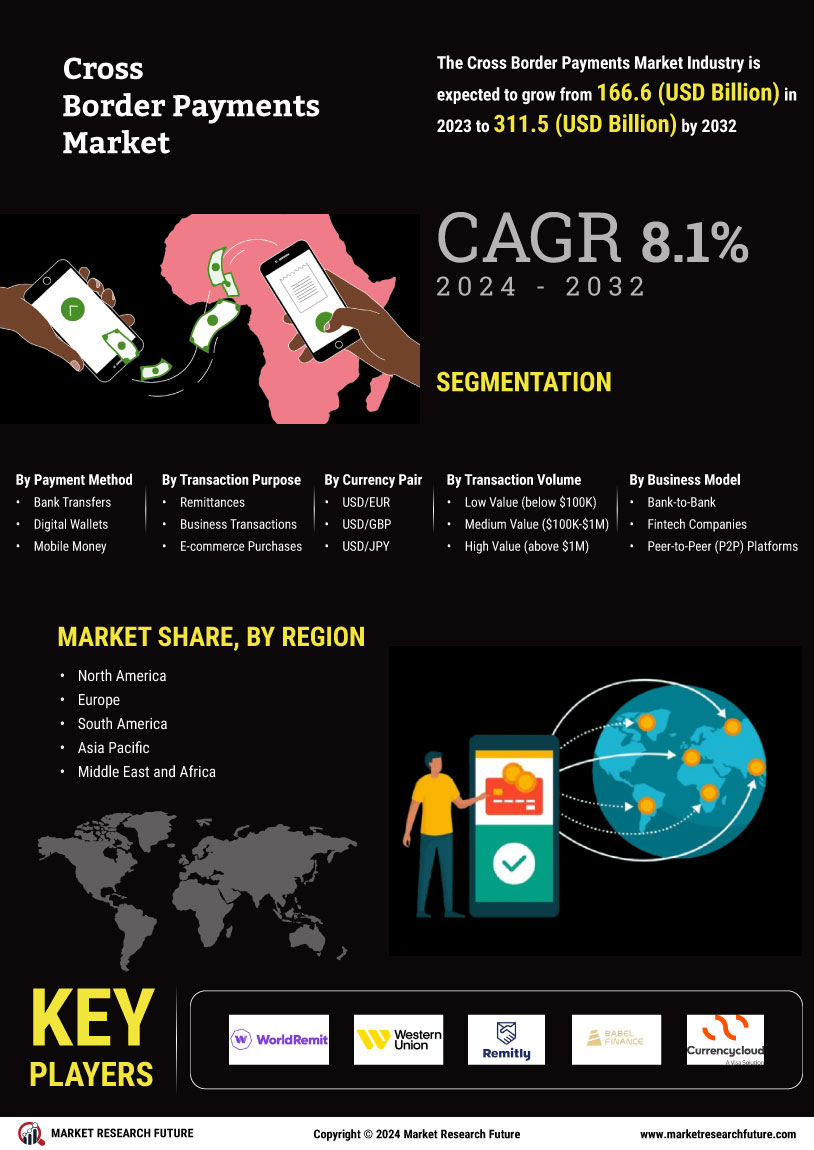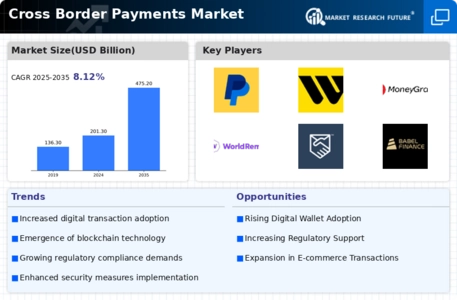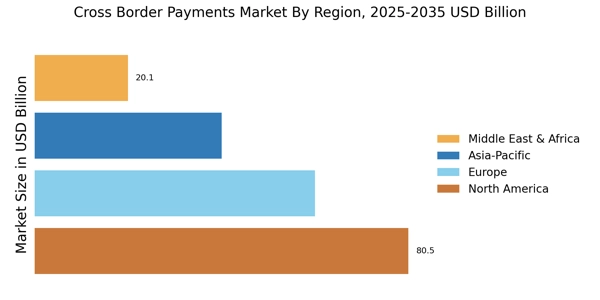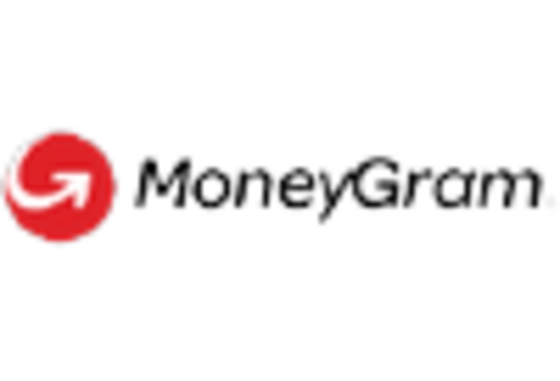The Cross Border Payments Market is currently characterized by a dynamic competitive landscape, driven by technological advancements and increasing consumer demand for seamless international transactions. Key players such as PayPal (US), TransferWise (GB), and Revolut (GB) are strategically positioning themselves through innovation and regional expansion. PayPal (US) continues to enhance its platform by integrating advanced security features and expanding its service offerings, while TransferWise (GB) focuses on transparency and cost-effectiveness, appealing to a growing base of price-sensitive consumers. Revolut (GB), on the other hand, emphasizes a comprehensive financial ecosystem, integrating banking services with cross-border payments, thereby reshaping user expectations and competitive standards in the market.
The business tactics employed by these companies reflect a moderately fragmented market structure, where localized strategies and supply chain optimization play crucial roles. Companies are increasingly localizing their services to cater to specific regional needs, which enhances customer satisfaction and loyalty. This localized approach, combined with the collective influence of major players, fosters a competitive environment that encourages innovation and responsiveness to market demands.
In August 2025, PayPal (US) announced a strategic partnership with a leading blockchain technology firm to enhance its cross-border payment capabilities. This collaboration aims to leverage blockchain for faster transaction processing and reduced fees, which could significantly improve PayPal's competitive edge in the market. The integration of blockchain technology not only aligns with the growing trend of digitalization but also positions PayPal as a forward-thinking leader in the payments space.
In September 2025, TransferWise (GB) rebranded itself as Wise (GB) and launched a new feature that allows users to hold multiple currencies in their accounts. This strategic move is indicative of Wise's commitment to providing a more user-centric experience, catering to the needs of global travelers and expatriates. By enabling customers to manage their funds in various currencies, Wise enhances its value proposition and strengthens its market position against traditional banks and other fintech competitors.
In July 2025, Revolut (GB) expanded its services into several emerging markets, including Southeast Asia and Africa, by establishing local partnerships. This expansion strategy not only diversifies its customer base but also capitalizes on the growing demand for digital financial services in these regions. By localizing its offerings and forming strategic alliances, Revolut is likely to enhance its competitive positioning and drive growth in previously untapped markets.
As of October 2025, the Cross Border Payments Market is witnessing trends that emphasize digitalization, sustainability, and the integration of artificial intelligence. Companies are increasingly forming strategic alliances to enhance their service offerings and improve operational efficiencies. The competitive differentiation is shifting from price-based competition to a focus on innovation, technology, and supply chain reliability. This evolution suggests that companies that prioritize technological advancements and customer-centric solutions will likely emerge as leaders in the future.


















Leave a Comment